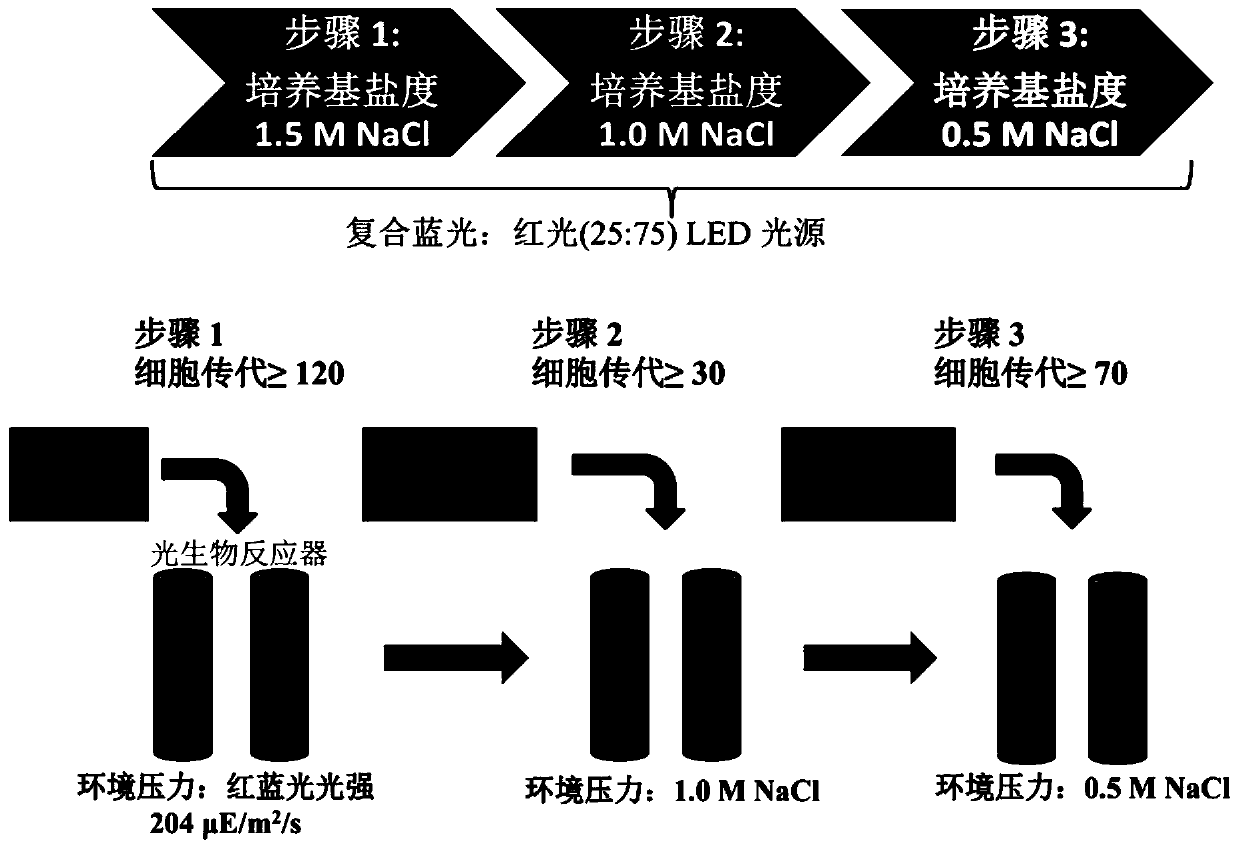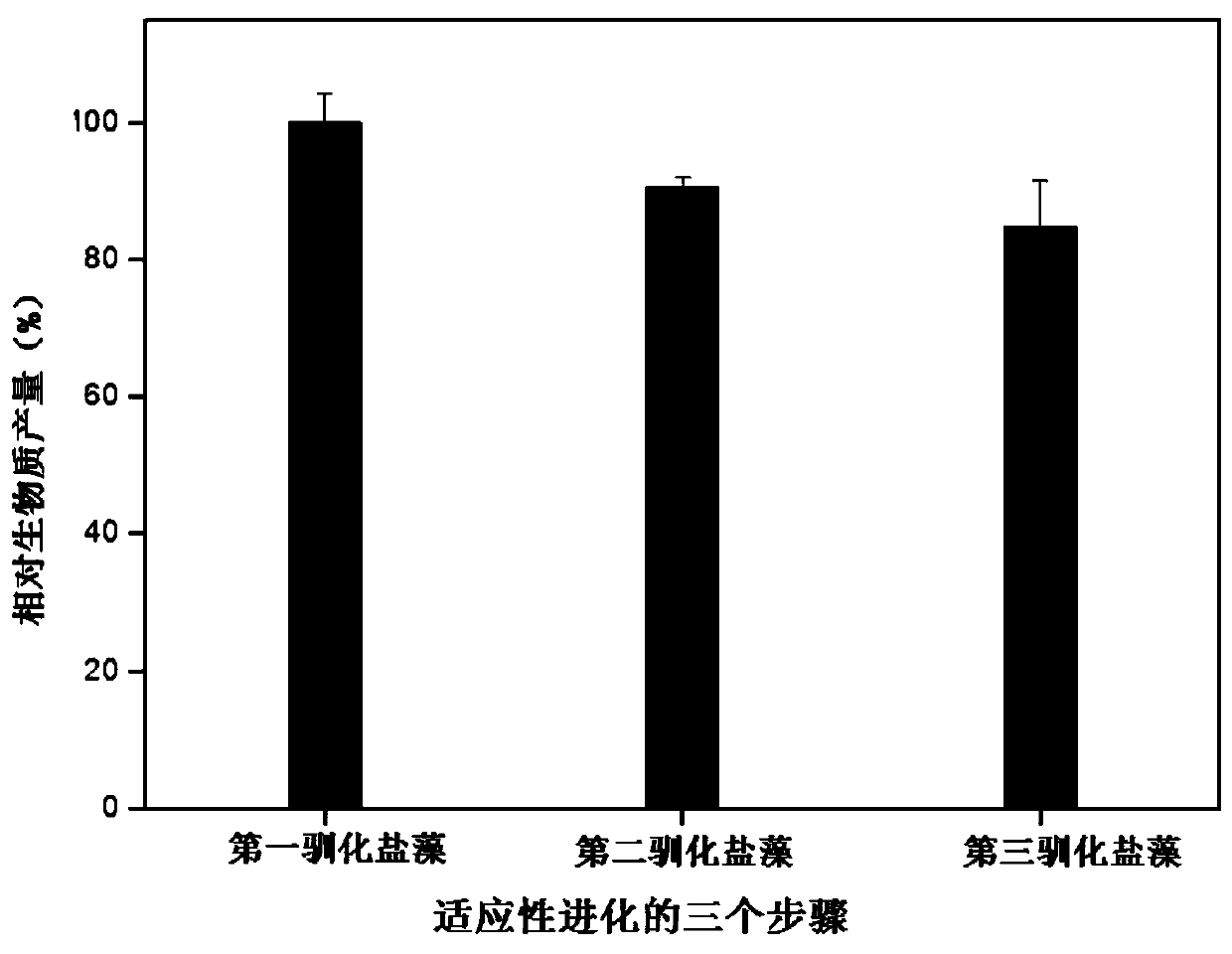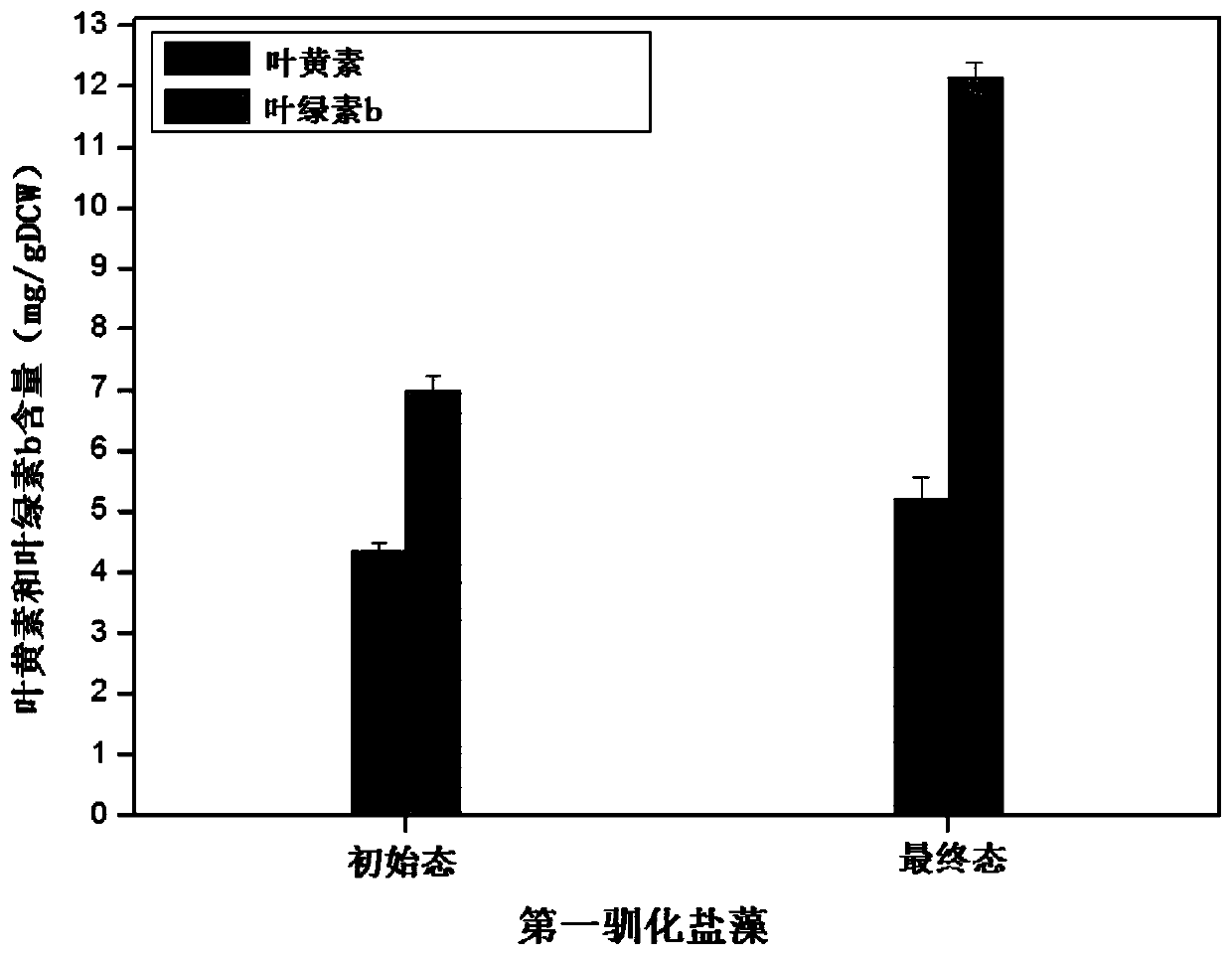Method for evolution and domestication of halophilic microalgae
A technology of microalgae and salina, applied in the direction of using microorganisms, methods based on microorganisms, biochemical equipment and methods, etc., can solve the problems of large environmental impact, difficult source of raw materials, low yield, etc., to increase production, It is beneficial to environmental protection and the effect of improving the level of lutein produced by salina
- Summary
- Abstract
- Description
- Claims
- Application Information
AI Technical Summary
Problems solved by technology
Method used
Image
Examples
Embodiment 1
[0019] Such as figure 1 Shown is the basic flow of the implementation of the adaptive evolution method, a method for the evolution and domestication of halophilic microalgae, which specifically includes the following steps:
[0020] 1) Streak Dunaliella salina (University of Texas Culture Collection, No. UTEX LB#200) on the Gg-8 plate medium and place it at 20 μE / m 2 / s under the condition of fluorescent light, the culture temperature was 20°C, and the culture time was 2 weeks, and isolated Salina algae colonies were obtained.
[0021] 2) Inoculate the colony of Salina algae obtained in step 1 into a shake flask containing 30 ml of Gg-8 medium at a rotation speed of 100 rpm, and culture at 20° C. for 5 days to obtain activated algal species.
[0022] 3) Inoculate the activated algae species obtained in step 2 into a photobioreactor containing 300ml Gg-8 medium, the volume of the activated algae species inoculated accounts for 20% of the medium, and the volume concentration is...
Embodiment 2
[0029] A method for evolution and domestication of halophilic microalgae, specifically comprising the steps of:
[0030] 1) Streak Dunaliella salina (University of Texas Culture Collection Center No. UTEX LB#1644) on the Gg-8 plate medium and place it at 50 μE / m 2 / s under the condition of fluorescent light, the culture temperature was 25°C, and the culture time was 1 week, and isolated Salina algae colonies were obtained.
[0031] 2) Inoculate the colony of Salina salina obtained in step 1 into a shake flask containing 50 ml of Gg-8 medium at a rotation speed of 150 rpm, and culture at 25° C. for 3 days to obtain activated algal species.
[0032] 3) Inoculate the activated algae species obtained in step 2 into a photobioreactor containing 400ml Gg-8 medium, the volume of the activated algae species inoculated accounts for 25% of the medium, and the volume concentration is 2.0% carbon dioxide, The pH of the control medium was 7.5, the culture temperature was 25°C, and the light...
Embodiment 3
[0039] A method for evolution and domestication of halophilic microalgae, specifically comprising the steps of:
[0040] 1) Streak Dunaliella pasteurii (University of Texas Culture Collection, No. UTEX LB#2538) on the Gg-8 plate medium, and place at 50 μE / m 2 / s under the condition of fluorescent light, the culture temperature is 20°C, and the culture time is about 2 weeks, and isolated Salina algae colonies are obtained.
[0041] 2) Inoculate the colony of Salina salina obtained in step 1 into a shaking flask containing 50 ml of Gg-8 medium at a rotation speed of 100 rpm, and culture at 20° C. for 5 days to obtain activated algal species.
[0042] 3) Inoculate the activated algae species obtained in step 2 into a photobioreactor containing 300ml Gg-8 medium, the volume of the activated algae species inoculated accounts for 25% of the medium, and the volume concentration is 1% carbon dioxide, The pH of the control medium was 6.5, the culture temperature was 25°C, and the ligh...
PUM
 Login to View More
Login to View More Abstract
Description
Claims
Application Information
 Login to View More
Login to View More - R&D
- Intellectual Property
- Life Sciences
- Materials
- Tech Scout
- Unparalleled Data Quality
- Higher Quality Content
- 60% Fewer Hallucinations
Browse by: Latest US Patents, China's latest patents, Technical Efficacy Thesaurus, Application Domain, Technology Topic, Popular Technical Reports.
© 2025 PatSnap. All rights reserved.Legal|Privacy policy|Modern Slavery Act Transparency Statement|Sitemap|About US| Contact US: help@patsnap.com



